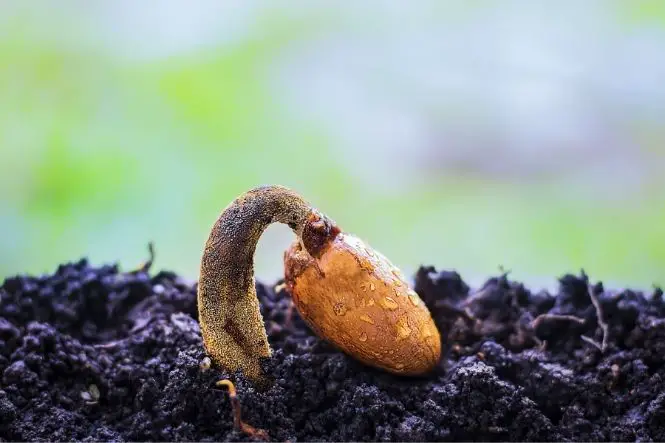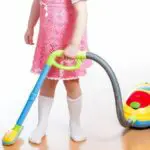Seeds contain the potential to be a whole new plant, and just need a bit of water, care and attention, as well as a bit of time, to grow. Seeds range from smaller than grains of sand (orchids) to about as big as a football (Coco de Mer palm) but they all have the same parts inside them.
Table of Contents
The Parts of a Seed
Seeds are made up of a number of different parts, and these are all important to the development of the young plant.
Seed Coat
The seed coat protects the seed. In some seeds, this is so tough that the seed must pass through an animal or bird’s digestive tract or be burned in a forest fire before it can germinate.
Plant Embryo
The plant embryo is made up of a stem (the hypocotyl), a root (the radicle), one or two seed leaves (the cotyledons) and what will become the first bud (the plumule). The root is the first part of the plant to emerge during germination.
The cotyledons will form the first leaves of the plant, and contain the nutrients that the plant needs (the endosperm) until it forms the true leaves and can make its own food through photosynthesis.
Looking At Seeds
Soak a couple of bean seeds in water, at least overnight, but for two or three days if possible (change the water every day). Compare the bean with a dried one. Are there any differences? Squeeze the two beans gently – what happens to the soaked bean?
Seeds need water to germinate, as this begins to breaks down the nutrients in the endosperm, allowing the root and shoot to begin to grow. The soaked bean will be plumper and heavier than the dry bean, because of the water it has absorbed. Squeezing the seed may release some bubbles and a drop of two of water from the tiny hole next to the scar where the bean attached to the pod – this is where the water gets into the seed.
Carefully peel the seed coat off the bean. What does the bean look like?
The bean will be in two halves – these are the cotyledons. Plants that have broad leaves and branching leaf veins, like beans, usually have two cotyledons, and are known as dicotyledonous (or dicots). Plants that have narrow leaves and parallel veins, like grasses, usually have one cotyledon, and are known as monocotyledonous (or monocots).
If the two halves of the bean don’t open on their own, carefully open them up. Use a magnifying glass to see what is inside – it will be the same colour as the seed leaves, so look carefully. Is it possible to see the different parts of the embryo plant?
Inside the opened bean will be the root, and the two parts of the shoot – the hypocotyl and plumule. The size will depend on how long the seed was soaked, but they may be very tiny.
Try the same with a pea seed – is there any difference?
Watching Germination
Roll up a piece of blotting paper and put it in a jar – make sure that it’s big enough to go around the jar one and a half or two times. Put some water in the bottom and let it soak up to the top of the paper. Soak a bean seed (don’t cut it open) and then put it between the blotting paper and the side of the jar. Keep the blotting paper damp. Watch it for a few days to see what emerges first.
The root will emerge first, and then the shoot – the hypocotyl with the seed leaves, and then the plumule, which will develop into the true leaves and the growing point.




